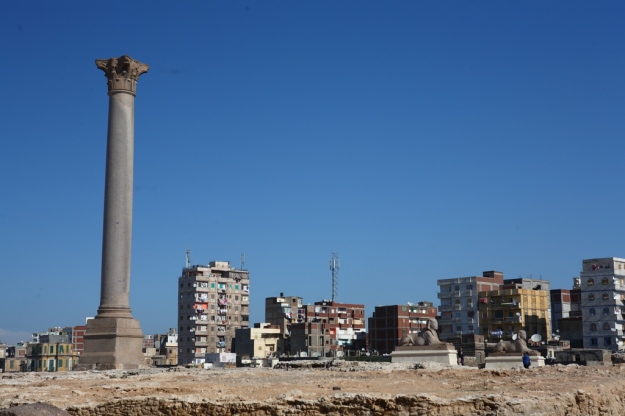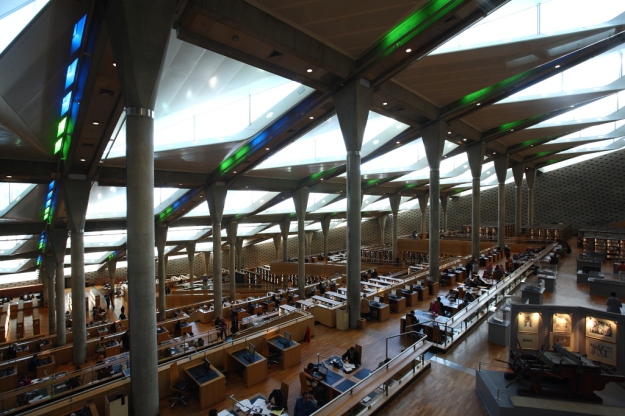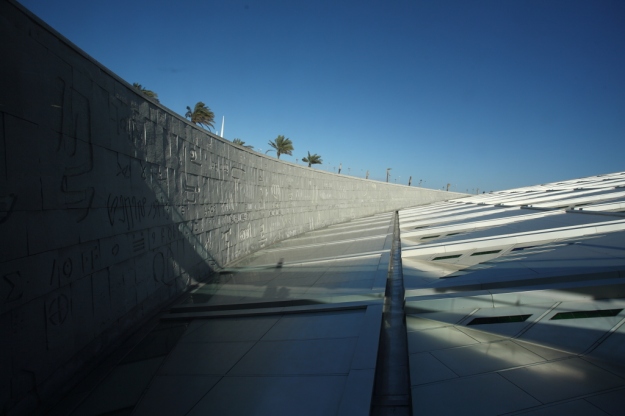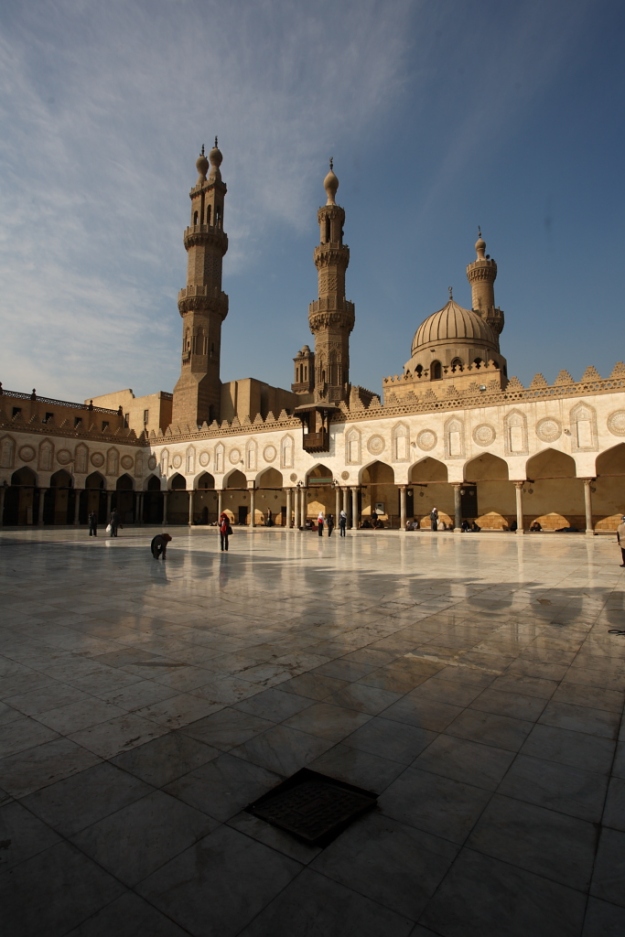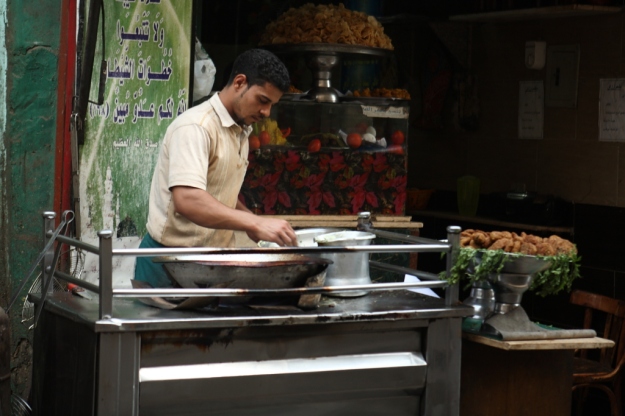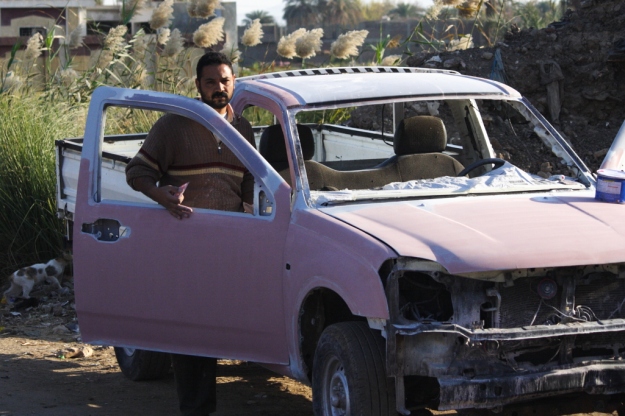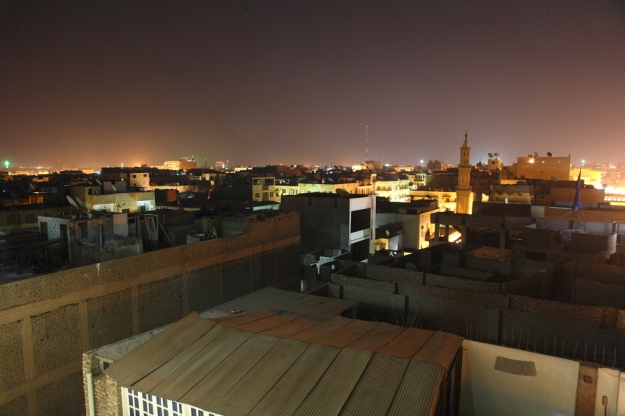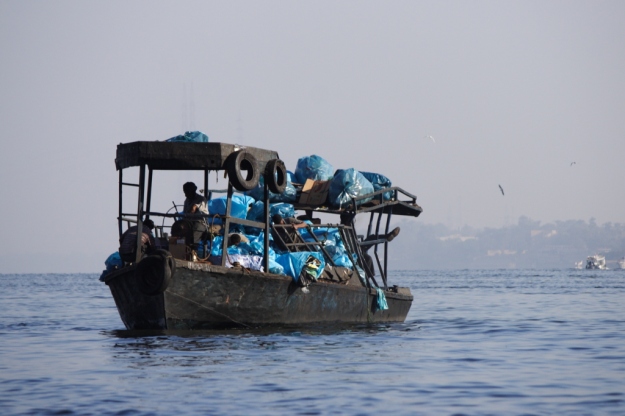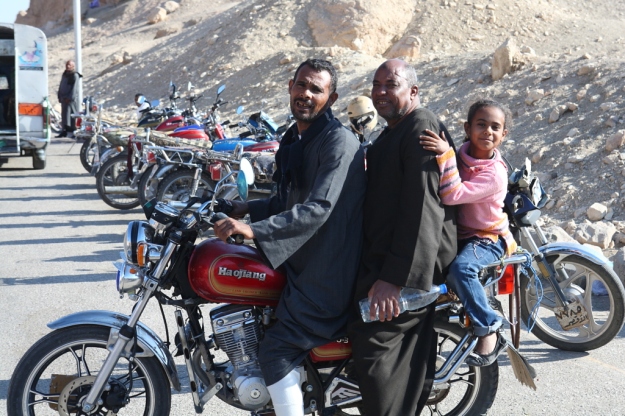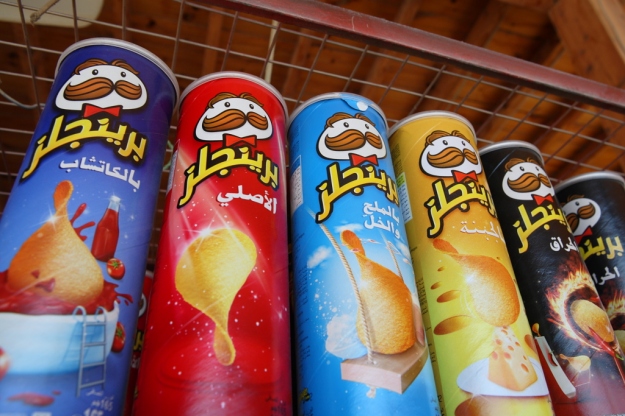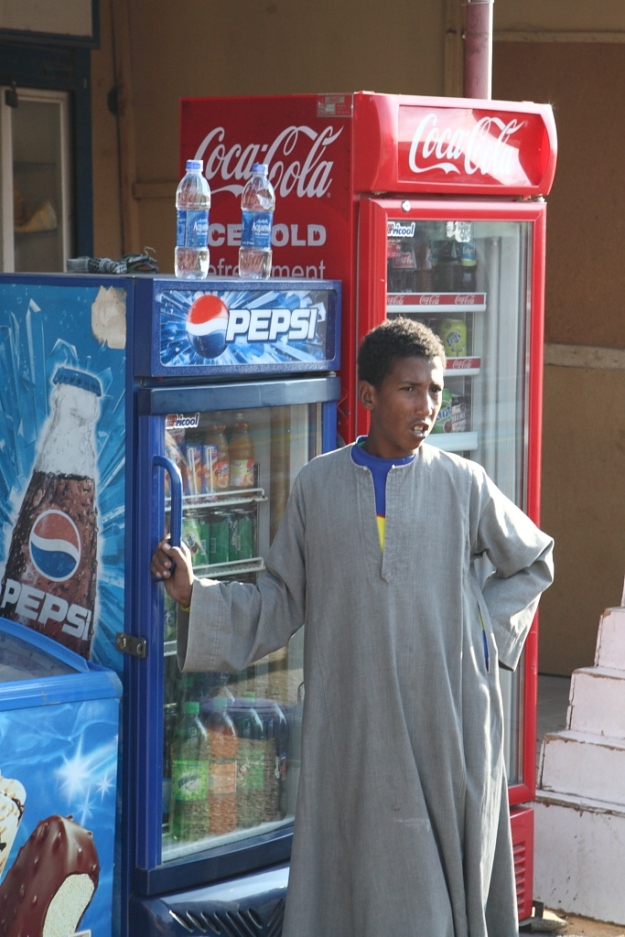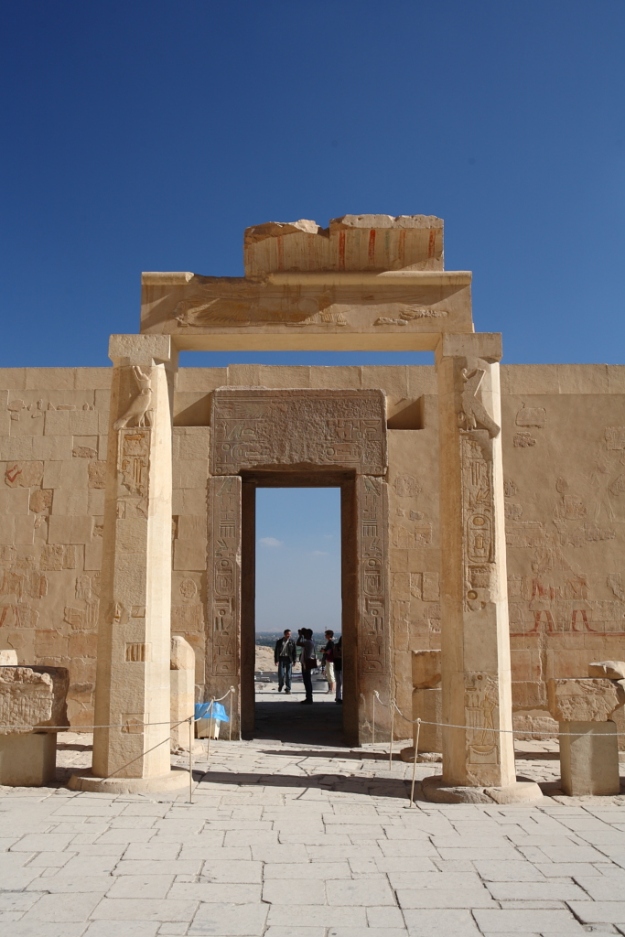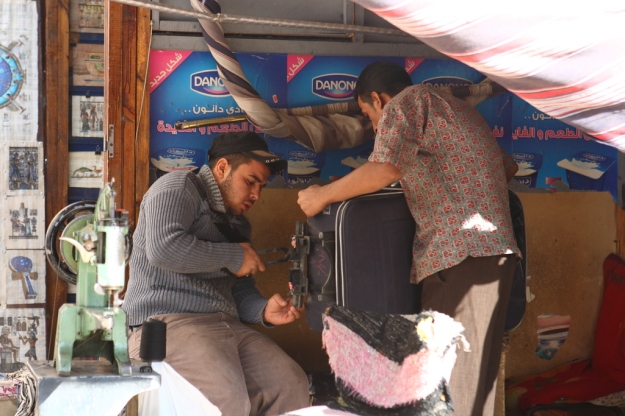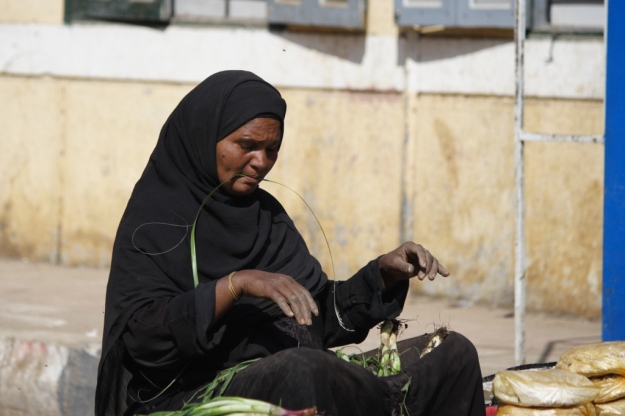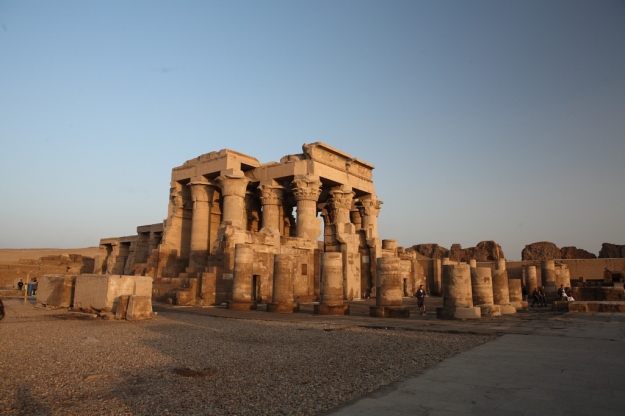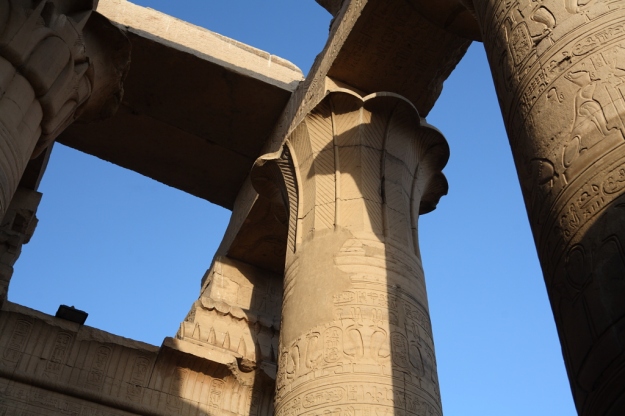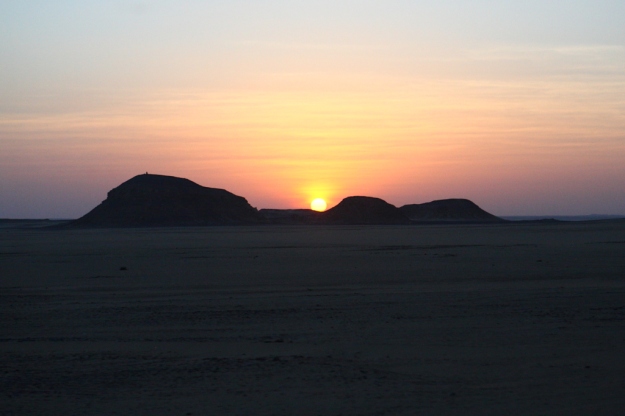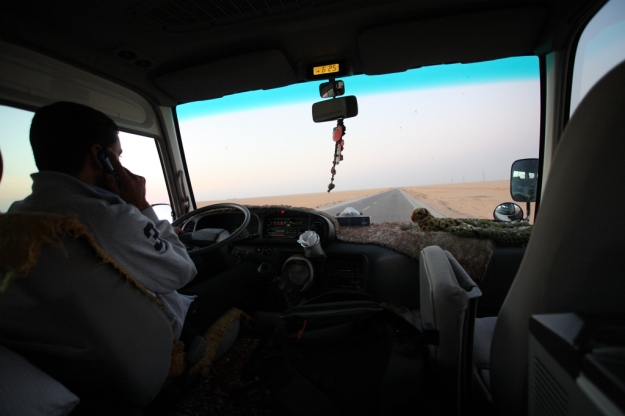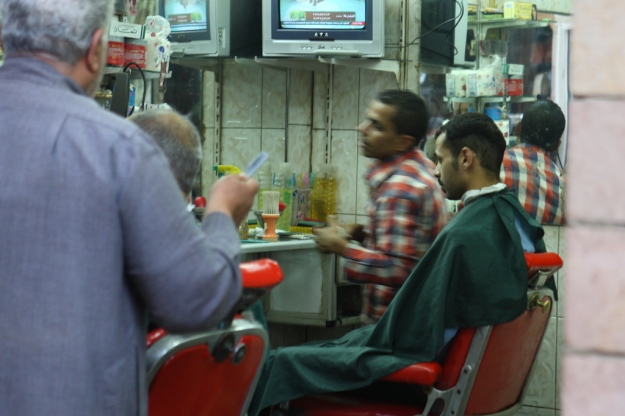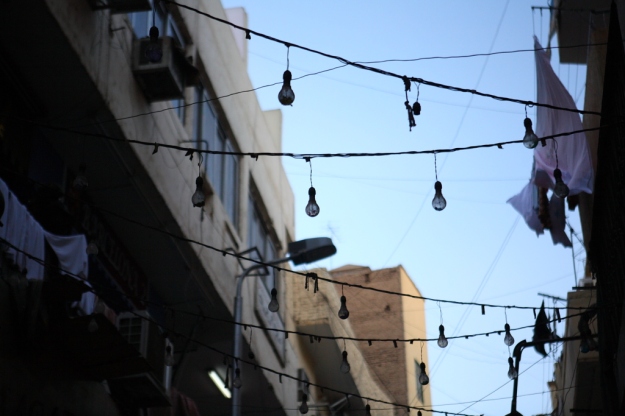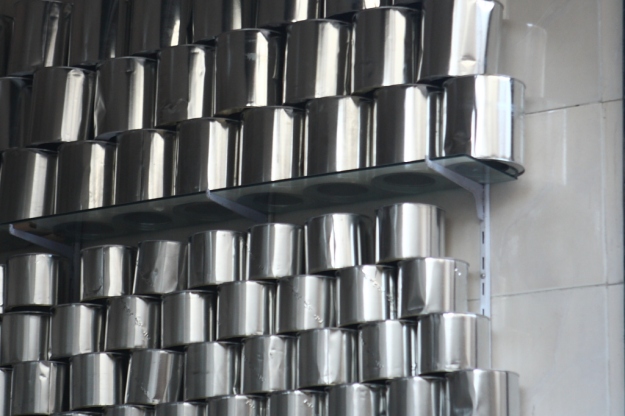Day 9
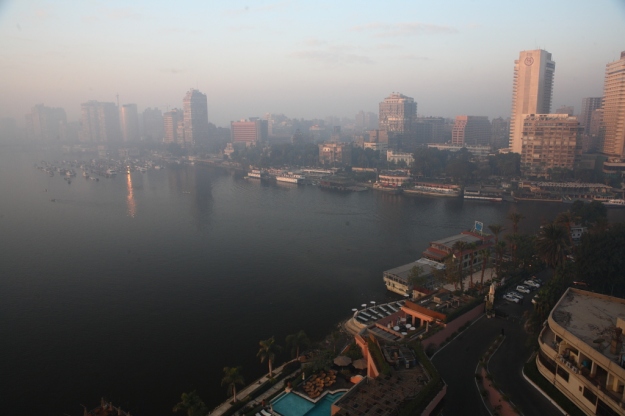
The smog in Cairo is very evident in the morning, as the sunrise is obscured by the opaque haze that surrounds the city. Today we ventured by tourist bus to the port city of Alexandria, the western end of the Nile delta as it touches the Mediterreanean. Alexandria in contrast, is cool and clear, the sea bringing in a crisp wind that seems to cleanse the dirt and dust from our breath.
I suspect it is unfair to observe Egyptian life through the lens of Canadian culture and norms. Like the Facts and Arguments page of the Globe, it seems trite to highlight the quirks of things we’ve seen here. For example, today I saw a donkey going up the stairs of a highway pedestrian overhead walkway pass. That seems weird, but if you’ve for to get your donkey and your goods to the other side and some urban planner left a major artery to block your daily commute, how else will you do it? Three workmen sitting on the back of a flatbed truck, chatting away at 80km/h. Why not? Everyone loves a mid morning break to catch up with coworkers.
Driving out to Alexandria, there is a tire shop selling tires to people over the concrete barrier wall of the freeway. Absurd? Well no, it seems to work for them, tires are being sold.
What is really unusual? Drivers attaching random logos to their cars. I understand the occasional VTEC or Mugen decal, but last night I saw a ReMax vinyl cutout over the windshield of a car. Is he a real estate agent? I don’t think so. I’ve seen Sunbeam appliance logos, recycling symbols, and one proclaiming loudly the owner loves house music. My favourite so far is a row of icons on the back of some of the buses here. At first, I thought these icons symbolized features of the tourist bus that would make you pick this bus over another. Instead, they seem to be random pictograms including No Smoking, VCD, Brightness, Contrast, and Temperature. Why they are so popular is anyone’s guess, although when I was younger I had a sweat shirt from Hong Kong which proclaimed “Amy Loves to Paint!” with a picture of a cartoon rabbit, who presumably was named Amy. Someone in a clothing factory thought it was a good design and someone else thought it would make a good gift to a teenager in Canada.
An hour or so out of Cairo is the Smart Village, a corporate industrial park filled with big technology names emblazoned on sleek new office buildings, like Microsoft and Oracle. Just down the road, new housing developments and home furnishing stores offering Natuzzi sofas. It seems the middle and upper classes of Egypt are moving to the suburbs.


Touring around Alexandria is quite picturesque compared to Cairo. Conquered and attacked by the Romans, the Greeks, the British, and the French, the city has an unusual international style to it, perhaps based on all the influence from around the sea. We visited Montazah Palace, now a home of the President, and drove around the gardens built by Abbas Hilmi Pasha. We then visited the Citadel of Qaitbay at the western end of the harbour, which was built in the 1400’s, destroyed, then rebuilt after the British left. Inside is a mosque and a cistern for water underground, surrounded overall by a double thick wall to protect from defenders.
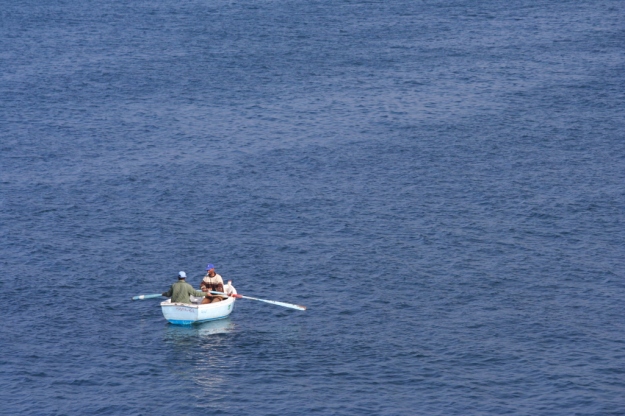
Today, the only the fort defends against is tourists and locals looking for a place to hang out. Hundreds of couples nestled into the nooks and crannies of the fort, along with a few amateur fishermen looking for a catch. Alongside the fort there, hundreds of artifacts and stone blocks from the old Lighthouse of Alexandria were found underwater. The Lighthouse, a wonder of the ancient world alongside the Pyramids, used to stand several stories tall, guiding ships of commerce to ancient Egypt and identifying potential attackers from the sea ahead of time. Their pieces are cataloged and periodically excavated to be displayed at another site, the Roman Theatre.

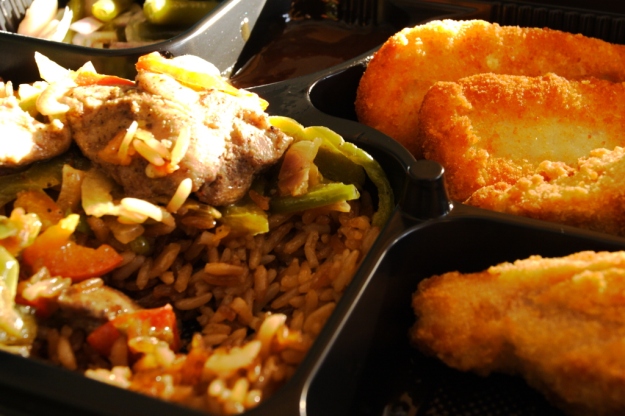
The Roman Theatre ruins, now nestled in the middle of the city, were unearthed in the 1960’s. Here, a circular amphitheatre was discovered, along with twenty lecture halls and a bath complex. A row of Roman columns decorated one side of a central street alongside the theatre. For lunch today, I noticed a local fast food chain called Mo’man. Intrigued, we went for lunch, after previous day’s encounter with the McDonalds McArabia, a beef kofteh affair wrapped in Lebanese flatbread and characteristic special sauce. It was pretty good, so we decided to try some more Egyptian fast food today. Mo’man is a local chain with several thousand restaurants around the country and was founded by two Egyptian brothers in anticipation of American investment and expansion in the 1980’s. Surprisingly, Mo’man has prospered in comparison to its American counterparts, in part by offering a mix of local flavours with fast food cooking techniques.
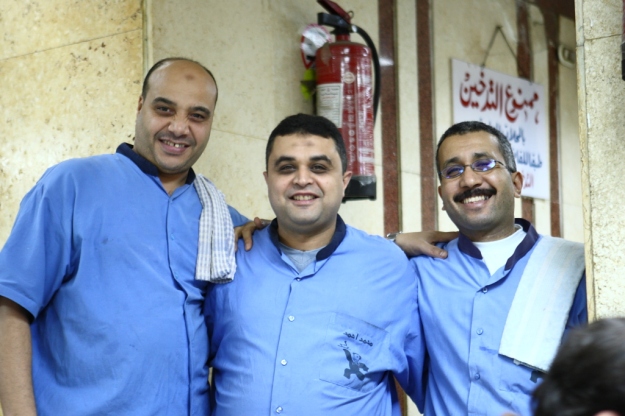
The night in Alexandria, like all of Egypt, is vibrant. Walking into the fresh cool evening, we took a taxi to the downtown square and walked to dinner at Mohammed Ahmed, a local restaurant we found in the guidebook. The taxis here appear to be old Ladas, direct from Russia and as we swerved along the Corniche, the bright signage entranced visitors to this seaside resort town. If I had to describe the atmosphere at Ahmed’s, it would be like the venerable Schwartz’s Delicatessen in Montreal. Waiters, mostly middle aged to older men, bring you unadorned plates of beets, pickles and foul, a bean dish served with a fried egg. The place has a local charm to it, friendly and unassuming. I really liked the ambience there, it made us feel like city dwellers and not tourists, despite the fact on ocassion, admist the old couples dining out, the families with their push-strollers, and the occassional take out order, there would be the stranger holding a wrinkled Lonely Planet.
Sitting in the aisle near the door gave is a prime view of the clientele and the staff pulling out giant pots of tahini to be cleaned and returning empty beverage crates to suppliers waiting outside.

Around the corner, was a street filled with cellphone shops. Their bright flourescent lights and hundreds of phone boxes covered the storefronts, with purchasers peering at the handwritten signs attached to each saranwrapped box. Upon greater inspection, many of the phones were used, suggesting a large volume of second hand resale. Amongst the stores, curbsiders with a handful of old phones placed upon upturned crates stood between cars, quietly waiting for buyers to come up and look for a phone.
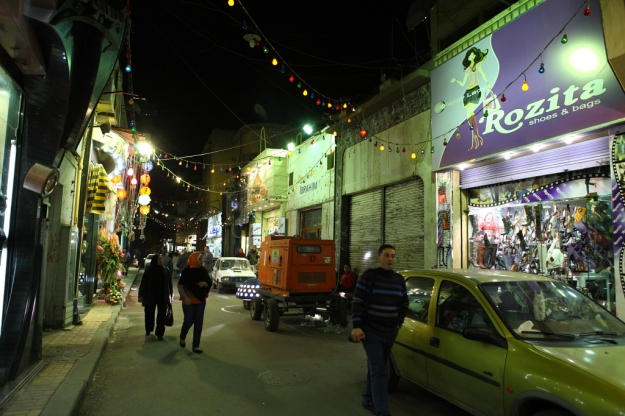
Along another street was a brightly lit alleyway, with a few gents sitting around a giant upturned disco ball. What they were doing or advertising, it is unknown, though the corridor was filled with shoe and clothing stores.

